After 20 years of horseshoeing, I believe farriers and horses would benefit if more emphasis was placed on the biomechanics of the hoof. That’s why, after consulting with other farriers and closely scrutinizing the horses I’ve worked on, I’ve come to define balance as the relationship of the hoof capsule to the coffin bone.
Likewise, I define breakover as the function of the hoof capsule as it relates to the coffin bone, and proper management of breakover is the correct placement of the hoof capsule to the coffin bone on the day of shoeing to optimize breakover. Precise measurements will even allow a farrier to determine how far from optimum breakover a hoof is at any point during the shoeing cycle.
The front feet of the horse serving as an example in this article are typical of many that we treat at the clinic where I work, the Alamo Pintado Equine Medical Center in Los Olivos, Calif. The structures and biomechanics of these feet are out of balance, as they are with many horses, from backyard ponies to million-dollar performance horses. The pathology is the same, and so are the principles employed to rehab the feet and change the mechanics to help heal damaged tendons.
If we can accurately assess the state of the horses’ hoof anatomy and apply a specific prescription, we might have a chance to help these horses. In some cases, the pathology is too great and the million-dollar performance horse becomes a backyard pet.
Evaluate The Feet
We must first assess what we have, then it’s a matter of adding or subtracting to achieve what we need to reach functional balance. Viewing these feet from the front (Figure1), the hooves are straight and symmetrical from left to right. The right foot is a little wider, which corresponds to the larger right shoulder, which is not shown in the photo.
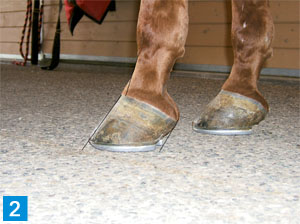
Figure 2. This lateral view reveals dorsal flaring, the vertical pasterns and the bulbar cushion protruding over the heels.
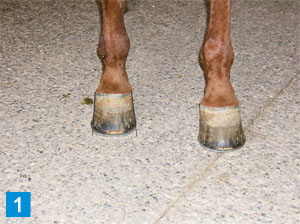
Figure 1. The front feet of this horse are typical of many that could benefit from trimming and shoeing based on precise measurements to help restore proper biomechanical function. The care of these feet is outlined in the accompanying article.
The feet start to flare medial-laterally about halfway down, stretching through the epidermal laminae. In the lateral view (Figure 2), we can see the dorsal flaring, the vertical pasterns and the bulbar cushion protruding over the heels.
To evaluate the feet in the solar position (Figures 3 and 4), use your fingers to examine the foot through the coffin joint and mark the center of rotation. This can be done with a pad on the foot. Measure from the center of rotation to where the frog sulcus goes into the heel bulb; on this horse the distance is 55 millimeters (mm).
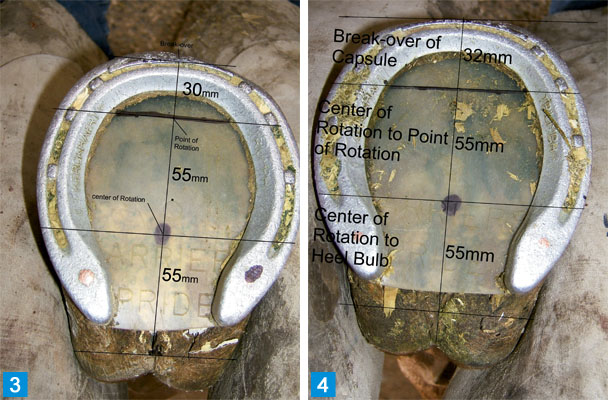
Figures 3 and 4. The measurements needed to properly manage breakover, promote healing and restore proper biomechanical function are shown in these photos. They include measures of the distance from the center of rotation to where the frog sulcus enters the heel bulb, and from the center to the breakover of the shoe.
Next, mark 55 mm from the center to the toe; this is the position of the tip of P3, the point of rotation. To evaluate breakover, measure from the center of rotation to the point of breakover on the shoe. This is 30 mm on the left foot and 32 mm on the right.
When a horse is in perfect balance, the breakover of the hoof capsule is in the same place as the point of rotation, the tip of P3. Due to horn growth, the foot migrates forward an average of 2.5 mm per week. To score this, every 2.5 mm equals one week shod. Thus a horse with a breakover 15 mm past the point of rotation can be said to be at a 6-week functional shoeing and have a breakover score of 6, meaning that it’s as if the horse was shod 6 weeks ago.
This computation can be written as a formula:
(B/O - P) / 2.5 = Functional Weeks Shod
In this formula, B/O represents the measurement from the center of rotation to the breakover on the shoe, and P represents the palmar measurement described below.
The horse shown here has a breakover score of 12. Although he was shod 6 weeks before, his feet are functioning at a 12-week shoeing. This is common when a breakover (rolled toe, rocker toe) is not built into the shoe. Although the shoe might be in the right place on the foot, there is no function or mechanics in the shoe to relieve leverage.
Radiographs Help
Lateral radiographs are a great source of information for the farrier, provided they are taken properly. Figure 5 shows the right front foot. Note the laminae stretching, good sole depth, flat palmar angle, good medial-lateral balance, the navicular bone position, the bull-nose front of P3, the bulbar cushion, the straight P1 to P3 axis and the breakover distance.
The radiograph shows quite a bit of bone pathology, including pedal osteitis, ring bone and bone spurs. The horse has adequate sole depth but poor circulation to the sole because the position of P1 has overloaded the palmar region of the foot. Because of the caudal lameness, he is trying to shift his weight forward, but doing so overflexes P3.
Shoeing Strategy
When shoeing this horse, our goal is to use what foot we have and add what we need so the mechanics of the foot working properly. We must realign the hoof capsule breakover with P3, increase the palmar angle to place P1 in a more normal load angle and add support for the frog, laminae and P3.
The left front foot has 24 mm of sole under the tip of P3 and 24 mm of sole under the palmar process (Figure 6). That provides 9 mm of sole that can be safely removed from the front and 4 mm from the heels.
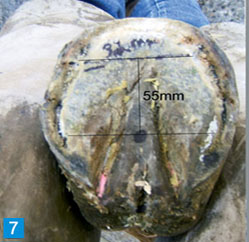
Figure 7. To achieve dorso-palmar balance, the toe was rockered back to 55 mm from the center of rotation.
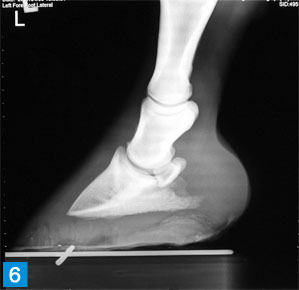
Figure 6. The left front foot has 24 millimeters of sole beneath the tip of P3 and 24 mm under the palmar process.
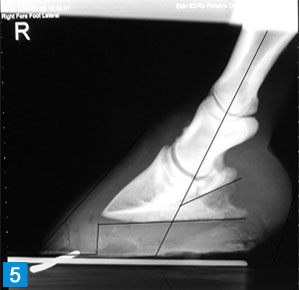
Figure 5. This radiograph reveals numerous features of the foot, including stretched laminae, good sole depth, a flat palmar angle and a straight P1 to P3 axis.
Level the foot into a 90-degree medial-lateral plane with the long axis of the cannon bone. To get dorso-palmar balance (breakover position), rocker the toe back to 55 mm from center of rotation (Figure 7).
The right front foot has 23 mm of sole under the tip of P3 and 21 mm under the palmar process, leaving 8 mm that can be safely removed from the front and 1 mm from the heels. Rocker the toe back to 55 mm from center of rotation(Figure 8). Note on the solar view of these feet how dense the sole is and how the frog is distorted forward and melts into the sole. To use the point of these frogs as a geographical reference would be inaccurate. That is why using a numerical system from the center of rotation is preferred.
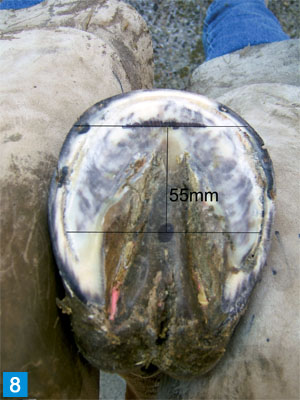
Figure 8. The right front foot has 23 millimeters of sole beneath the tip of P3 and 21 mm under the palmar process, and again the toe was rockered back to 55 mm from the center of rotation.

Figure 7. To achieve dorso-palmar balance, the toe was rockered back to 55 mm from the center of rotation.
Adding To Mechanics
I will use an MRO aluminum shoe. It has a 3-degree wedge and a 30 mm rolled toe web. TracMe makes a similar shoe. Adding 2 degrees in the heels moves the pastern 5 degrees. Rolling the heels of the shoe behind the center of rotation will add a little air-wedge and help tip the foot forward (Figure 9). The 30 mm toe web on this shoe allows the breakover to be adjusted over the tip of P3 (Fig. 10).
On sound horses with normal parameters, placing the breakover at the point of rotation (tip of P3) on shoeing day works well. We are able to move the breakover back by 10 mm on a normal horse, which would mean an extra 4 functional weeks during the shoeing cycle (Figure 11).
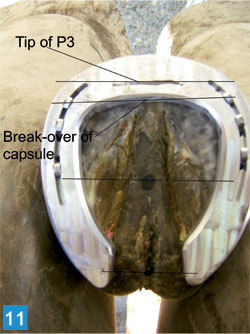
Figure 11. On sound horses with normal anatomical structure, moving the breakover back about 10 mm to a point under the tip of P3 extends the shoeing cycle about 4 weeks.
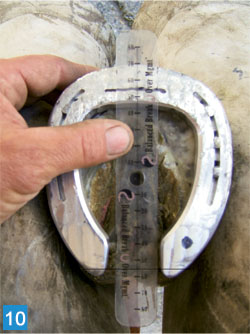
Figure 10. The 30 mm toe web on this shoe allows the breakover to be adjusted over the tip of P3.
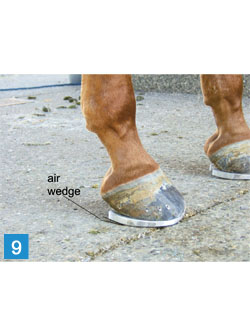
Figure 9. Rockering the heels of the shoe helps the foot tip forward.
On lame horses with compromised feet, we need to place the breakover caudal to the tip of P3, but we also need the toe of the foot to stabilize the leg. That is where a shoe like this comes in handy. For frog support, I use pour-in Equi-Pak pads, not seen in the photo.
After Shoeing
I have heard stories of lame horses being shod and miraculously becoming sound. I have yet to have that happen. Horses that are 3 or 4 lame on a scale of 5 take time to recover. As shown in the X-ray of the left front foot (Figure 12), this horse is still standing off his heel, but the anatomical structures are in a better position to start healing. The palmar angle has been raised to 9 degrees and the tendon surface angle to 55 degrees. This will take some tension off the deep digital flexor tendon. Note the breakover behind the tip of P3 and the extension of the shoe to support the heel bulbs.
Also, note the balance in the right front (Figure 13). The palmar angle is at 5 degrees — not as high as the left hoof, but the left is the tighter side and needs to be higher. In 6 weeks, the breakover of the shoe will be about 5 mm in front of P3.
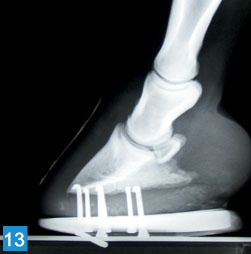
Figure 13. In the right front foot, the palmar angle has been placed at 5 degrees. In 6 weeks, the breakover of the shoe will be about 5 mm in front
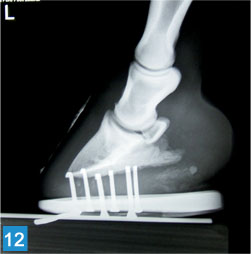
Figure 12. The horse is standing off its heel, as shown here by the left front foot, but the structures of the foot are in a better position to start healing.
Holding distortion of the feet to a minimum is what farriery is all about. Shoeing alone will not help this horse, but no medical or surgical therapies will be successful without it.
What Next?
We can write this trimming and shoeing program into a prescription and send it with the horse. The vet and farrier can make adjustments as needed. Maybe the hoof will need more wedge; maybe there will be a pain and growth adjustment and the foot will need less wedge. One thing is for sure: he will not be shod like this forever because something will change. Knowing what the parameters of the feet are will tell us that.







Post a comment
Report Abusive Comment